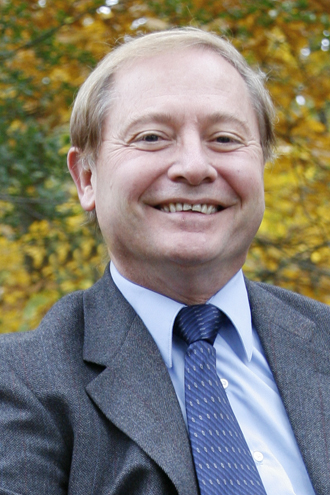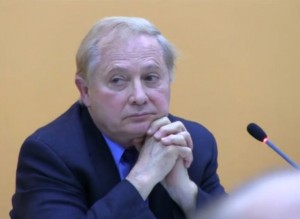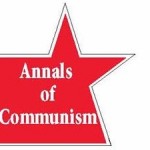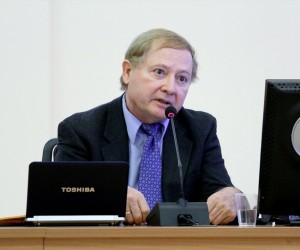American view upon church history in Russia: Interview with Gregory Freeze
Дата публикации: 11/01/2013As part of the research contest for young scientists Faith and Religion in Contemporary Russia “Sreda” started a series of interviews with researchers who study religious aspects. The following interview is with American historian Gregory Freeze, expert in the history of the Russian clergy.
“The West has undergone a “de-churching” but not “de-christianization”. To judge from the polling data on post-Soviet Russia, the situation there is remarkably similar”
Gregory Freeze,
a professor at Brandeis University
 Mr. Freeze, please, tell us where you studied and received your professional education?
Mr. Freeze, please, tell us where you studied and received your professional education?
I earned my PhD in 1972 at Columbia University in New York, where I studied under Professors Marc Raeff and Leopold Haimson. Like many Russianists in the 1970s, I was primarily interested in Russian social history, and I soon noticed that virtually no one—at least since P.V. Znamenskii—had worked seriously on the dukhovnoe soslovie. Indeed, few historians had even consulted and summarized the prerevolutionary literature; neither Western nor Soviet historians gave much attention to the Church and clergy. While that was predictable in the former Soviet Union (given the antireligious orientation of the regime), it was no less true of Western scholars as well (exceptional in that respect was someone like the émigré scholar Igor Smolitsch, at the time living and working in West Berlin).
That historiographical neglect stood in sharp contrast to the scholarship on West European history; British, French, and (to a lesser degree) German historians had long since begun to explore the social fabric of religious life, giving particular attention to the recruitment, training, and role of the clergy (both secular and monastic). Professor Raeff himself had worked on the Russian nobility and, in general, emphasized the importance of comparative scholarship, and he therefore strongly encouraged me to add the Russian dimension to current scholarship in Western historiography.
The chairman of my doctoral dissertation was Fr. Georges Florovsky, the famous theologian, historian, and author of many important works (including the foundational 1937 volume, Puti russkogo bogosloviia). He was already 75 years old at the time of my dissertation but still extremely sharp and full of insights and constructive criticism.
 Why is Russia interesting to you as a researcher in this aspect?
Why is Russia interesting to you as a researcher in this aspect?
As explained above, my interest in the Russian clergy arose chiefly because of the opportunity for original research: not since the revolution had scholars, whether clerical or secular, conducted scholarly research on the Russian Orthodox clergy. While the need to study the hierarchy and monasticism was also important, I chose to focus on the parish clergy precisely because of their close proximity and interaction with lay believers. Study of the parish clergy, I hoped, would enable one to gain new insight into “popular Orthodoxy” and what the Church and Orthodoxy meant in the everyday lives of ordinary believers.
As has become evident in my most recent research, that popular religion was extraordinarily resilient, with extremely high levels of religious observance to the end of the ancient regime and beyond. In that respect, Russia appeared to be a striking exception to what contemporary Europeans perceived as an inexorable, ubiquitous “secularization.”
Photo: at the lecture “Orthodoxy, power and secularization in Russia in 1860-1940s.”, German Historical Institute in Moscow, May 21, 2013.
Please, tell us about your current research projects.
 I have two on-going projects. One is a volume in the Yale University Press’s “Annals of Communism,” a series that publishes new documents from the Soviet era with accompanying analytical commentaries. My own volume is entitled Bolsheviks and Believers: Russian Orthodoxy, 1917-1941, which shifts the focus from the battle between the new regime and the institutional Church and clergy, to the confrontation between the regime and believers. The central argument is that the Bolsheviks disestablished the Church (as an institution) and dissolved the clerical estate (as a service group), but in the process shifted all power to the parish and laity. That lay empowerment underlay the religious history of the 1920s and 1930s, marked in the first decade by a revival of popular Orthodoxy, then in the 1930s by a systematic campaign to demolish the parish and to decimate lay activists (tserkovniki).
I have two on-going projects. One is a volume in the Yale University Press’s “Annals of Communism,” a series that publishes new documents from the Soviet era with accompanying analytical commentaries. My own volume is entitled Bolsheviks and Believers: Russian Orthodoxy, 1917-1941, which shifts the focus from the battle between the new regime and the institutional Church and clergy, to the confrontation between the regime and believers. The central argument is that the Bolsheviks disestablished the Church (as an institution) and dissolved the clerical estate (as a service group), but in the process shifted all power to the parish and laity. That lay empowerment underlay the religious history of the 1920s and 1930s, marked in the first decade by a revival of popular Orthodoxy, then in the 1930s by a systematic campaign to demolish the parish and to decimate lay activists (tserkovniki).
The second project, which actually commenced first but has been delayed by the Yale volume, examines the same problem of Church, State, and Laity, but in Imperial Russia (1750-1917). Its main focus is on the triadic interaction of those three actors, on the campaign by the Church and state to regulate and reform popular Orthodoxy, and later—from the mid-nineteenth century—by the authorities’ attempt to recognize and valorize popular piety. All this in effect is the “pre-history” to what would later unfold in the first two decades of “soviet power.”
 What do you think about such a phenomenon, as faith without religion? What causes it, how does it manifest itself and how important is it in Russia?
What do you think about such a phenomenon, as faith without religion? What causes it, how does it manifest itself and how important is it in Russia?
Historians, anthropologists, and sociologists have—for the last fifteen to twenty years—marveled at the statistical data on religion in the West. A broad set of empirical research (including the “World Values Surveys”, American Religious Identification Surveys and the polls of the Pew Research Center’s Forum on Religion) have demonstrated a widespread pattern of “believing without belonging.” That is, a huge majority of the population in nominally “secularized countries” profess to believe (in a personal God, Heaven and resurrection, the Ten Commandments and their applicability, and so forth), but relatively few (often single-digit percentages) belong to religious institutions. In that sense, they “believe without belonging” (a phrase first coined in 1994 by Grace Davie and since widely popularized in the professional literature). The rates, to be sure, vary considerably: the gap between believing and belonging has been much higher in Western Europe than in North America. But that differential is gradually closing, as the Americans—who earlier, overwhelmingly, both believed and belonged—have become increasingly independent of the Church (but not the faith). In a sense, the West has undergone a “de-churching” (rastserkovlenie) but not “de-christianization” (dekhristianizatsiia), certainly not in the simplistic form once envisaged by Marx, Durkheim, and Weber.
Photo: at the conference “Religious practices in the USSR: survival and resistance in conditions of forced secularization”, RSUH, Moscow, February 16-18, 2012.
To judge from the polling data on post-Soviet Russia, the situation there is remarkably similar: very high percentages profess to believe, but very small numbers are actively involved in the Church, rarely and briefly attend services (even on high holy days), and seem as “de-churched” as their peers in the West.
But that is really not my sphere of expertise and research—I leave that for others! But I think it would be very productive for specialists on Russian religious life to familiarize themselves with the growing corpus of theoretical and empirical research on Western Europe and North America. That could help Russianists frame questions more precisely, redirect empirical research and polling in productive (and comparable!) ways, and in the end to elucidate more sensitively what is unique to Russia and what is common to the modern world, East or West. I very much doubt that specialists will arrive at similar answers. However, we can only understand the differences (qualitatively and quantitatively) if we pose analogous questions and collect symmetrical data based on a similar questions and methodologies.
Learn more:
“All Power to the Parish!” An Orthodox Revival in 1920-s // State, Religion and Church in Russia and Worldwide, № 3-4 (30) 2012. Pp. 86-105.
The Great Reforms and the Russian Orthodox Church: The Role of Metropolitan Philaret. // a report at the colloquium “Philaret, Metropolitan of Moscow (1782-1867): Perspectives on the Man, His Works, and His Times” in Holy Trinity Orthodox Seminary in Jordanville, N. Y., 2002
Orthodoxy, power and secularization in Russia in 1860-1940s. // The lecture, organized by the Alexander von Humboldt Foundation and the German Historical Institute in Moscow.
Watch the VIDEO RECORDING of the lecture “Orthodoxy, power and secularization in Russia in 1860-1940s”:
Orthodoxie, Herrschaft und Säkularisierung in Russland, 1860-1940. Vortrag von Prof. Gregory Freeze (Brandeis University, USA). from DHI Moskau on Vimeo.
Photo by: ESM, RSUH, Brandeis University
Ksenia Medvedeva


